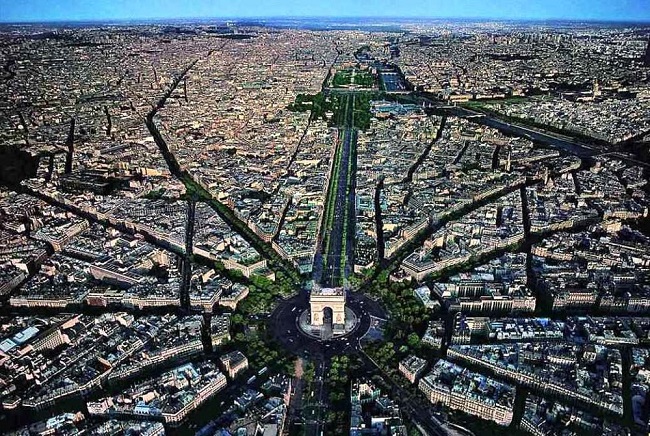
150 years ago, Paris became a modern metropolis
 |
Paris - In January 1870, Baron Georges-Eugène Haussmann resigned after 16 years as the prefect of Paris. With Napoleon III, he transformed the metropolis so that it continues to benefit from his legacy, writes the French newspaper Le Figaro.
Haussmann, who ruled Paris for an exceptionally long time, became a symbol of the authoritarian empire with its strong centralization and boundless spending. Émile Olivier, the then Prime Minister, called for his head. Napoleon mercilessly sacrificed his prefect, although he greatly valued what Haussmann had done for the metropolis and his regime as a whole.
Haussmann, who was somewhat theatrical and megalomaniacal, led a long procession of his employees through the streets after an audience with the emperor, and then to the town hall, the then seat of the prefecture, where he prepared four large registers in which people recorded their admiration for him and gratitude.
Since then, the verb "haussmanniser," the noun "haussmannization," and the adjective "haussmannian" have appeared in language, denoting his distinctive style of buildings, many of which were constructed during his tenure. He left behind a grand work, and Paris is still its heir today.
The root of it all was Napoleon III's desire to make Paris the foremost metropolis of Europe. Paris in the first half of the 19th century was a city with narrow, winding streets that were poorly lit. Such an environment was conducive to building barricades, and epidemics spread within it, such as the cholera outbreak that struck in 1849. The causes were dirty buildings and overcrowding of residents in the old center. Napoleon III placed particular importance on the metropolis from his youth. When he returned in September 1848 after a long exile, he carried a large plan of Paris under his arm, marking out the main adjustments he wanted to implement.
When Napoleon III restored the empire in December 1852, he appointed Haussmann, then the prefect of the Gironde department, as the prefect of Paris in June 1853. He admired his work during a previous visit to Bordeaux, and his interior minister, Persigny, praised his qualities. "He is great, strong, firm, energetic, and his spirit is fertile. This large beast can overcome all obstacles and defeat packs of foxes and wolves that harm all noble efforts of the empire," he said.
This choice proved to be wise. The mutual relationship between the emperor and his prefect is not easy to understand. Napoleon III saw Haussmann several times a week. It was a form of co-production: the prefect was often a stubborn executor without whom many projects would not have materialized, while the sovereign had ideas but lacked practical and organizational spirit. In this respect, Haussmann was his exact opposite. Haussmann also managed to admirably surround himself with collaborators and was an amazing manager.
For the plan of new streets in the metropolis, Paris owes much to the emperor, as well as the idea of large train stations, the Parisian market designed by architect Victor Baltard, the Hôtel-Dieu hospital, and the Opéra Garnier, as well as the incorporation of the Bois de Boulogne and Bois de Vincennes into the metropolis, along with the construction of parks and gardens.
Haussmann also played a key role in doubling the area of Paris and modernizing the water supply and sewage systems. All streets were equipped with sewage, which made Paris the most modern metropolis in the world at the time. The successes of the World Expositions in Paris in 1855 and 1867 are also largely Haussmann's achievements.
In 1870, some republicans called for Haussmann to be investigated for extravagant spending, loans, and opacity in financing. However, Haussmann did not keep anything for himself and left his office less wealthy than when he took it on. German Chancellor Otto von Bismarck and the Turkish sultan invited him to do what he accomplished in Paris. Haussmann refused but was quickly imitated worldwide.
The English translation is powered by AI tool. Switch to Czech to view the original text source.
0 comments
add comment












